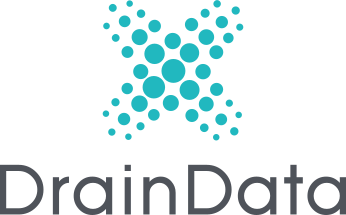Breast cancer is one of the most common cancers affecting women worldwide, but when detected early, it’s also one of the most treatable. Advances in screening, imaging, and AI-assisted diagnostics are making it possible to identify cancers earlier than ever before—sometimes years before they become clinically obvious. Early detection of breast cancer plays a crucial role in improving survival rates and reducing the need for aggressive treatments. Why Early Detection Matters Survival rates for breast cancer are strongly tied to the stage at diagnosis. According to the American Cancer Society, women diagnosed with localized breast cancer (confined to the breast) have a 5-year survival rate of over 99%. That figure drops to around 31% once the disease spreads to distant organs. “The earlier we find breast cancer, the more treatment options we can offer, and the less aggressive those treatments need to be.” — Dr. Maria Lopez, Oncologist, Johns Hopkins Screening & Diagnostic Tools There isn’t one “perfect” screening method—different tools are used depending on age, risk factors, and breast tissue density. Together, they form a safety net designed to catch cancers at the earliest possible stage. Self-exams: While no longer formally recommended as a stand-alone screening tool, self-exams help women stay familiar with their bodies and spot changes quickly. Clinical breast exams: Performed by a healthcare professional, these exams may detect abnormalities a patient overlooks. Mammography: Still the gold standard for population-wide screening. Digital mammography and 3D tomosynthesis reduce false positives and improve detection in dense breast tissue. Breast ultrasound: Often used for women with dense breast tissue or to further evaluate a suspicious finding on a mammogram. MRI scans: Reserved for high-risk patients (e.g., BRCA1/2 carriers). Extremely sensitive, often detecting cancers missed by mammography. Emerging tools: Liquid biopsies and AI-assisted image analysis are beginning to appear in clinical trials, promising faster and more accurate detection. 💡 Know the Signs Even with modern screening, many breast cancers are first noticed by the women themselves. Awareness of changes remains vital: A new lump or thickening in the breast or underarm Swelling or shrinkage in part of the breast Skin dimpling or puckering Nipple discharge, inversion, or tenderness Redness, scaliness, or irritation of the skin If you notice any of these symptoms, don’t panic—but do contact a healthcare professional as soon as possible. Not all changes are cancer, but all deserve evaluation. “I ignored a small dimple for months. When I finally got checked, it was stage I cancer—and completely treatable. That checkup saved my life.” — Sarah T., breast cancer survivor Understanding Risk Factors Some women face higher risks and should begin screening earlier or use more advanced imaging. Risk factors include: Genetic mutations (BRCA1, BRCA2, PALB2) Family history of breast or ovarian cancer Dense breast tissue Previous chest radiation therapy Lifestyle factors: obesity, alcohol consumption, smoking, and sedentary habits Genetic counseling and risk-based screening programs are increasingly being used to personalize detection strategies. Support Beyond the Scan The process of screening and waiting for results can be stressful. Support groups, counseling, and community organizations play an important role in helping women manage the anxiety of “what if.” “When I was called back after my first mammogram, I was terrified. Talking with other women who had gone through the same thing gave me perspective and strength.” — Lisa M., patient advocate Many hospitals now provide nurse navigators to guide patients through the screening, diagnostic, and—if necessary—treatment process. Awareness Every Month October is widely recognized as Breast Cancer Awareness Month, but the message is important year-round. Whether you schedule a mammogram for yourself, encourage a friend to get checked, or support someone facing a diagnosis, your action can make a difference. Clear Takeaways for Women & Families Start with awareness: Know your risk factors and recognize warning signs. Screening saves lives: Mammograms and other imaging tools catch cancer early when it’s most treatable. Support matters: Emotional, psychological, and community support empower women through every stage of care. Year-round commitment: Don’t wait for October—make early detection part of your regular health routine. Visual guide: monthly self-checks help you recognize changes early. Screening options: mammography vs MRI for different risk groups. 💖 To the fighters, survivors, caregivers, and those we’ve lost—you are not forgotten. Together, we stand strong. 📅 Don’t wait. Make early detection part of your routine. #BreastCancerAwareness #EarlyDetection #ThinkPink #BreastCancerSupport #HealthMatters
